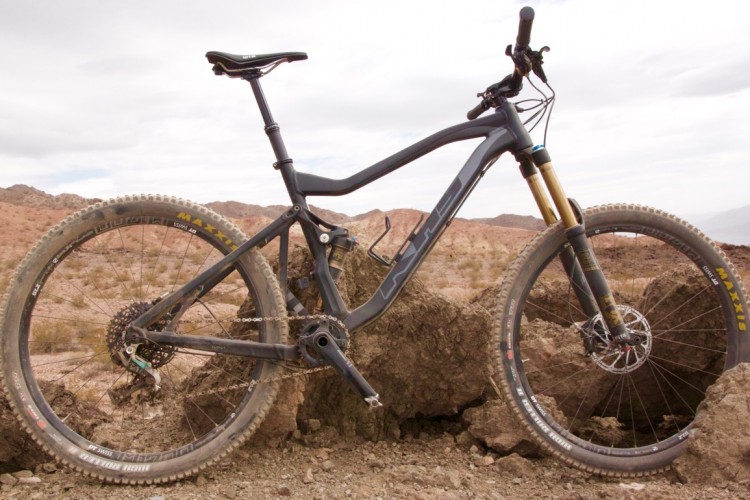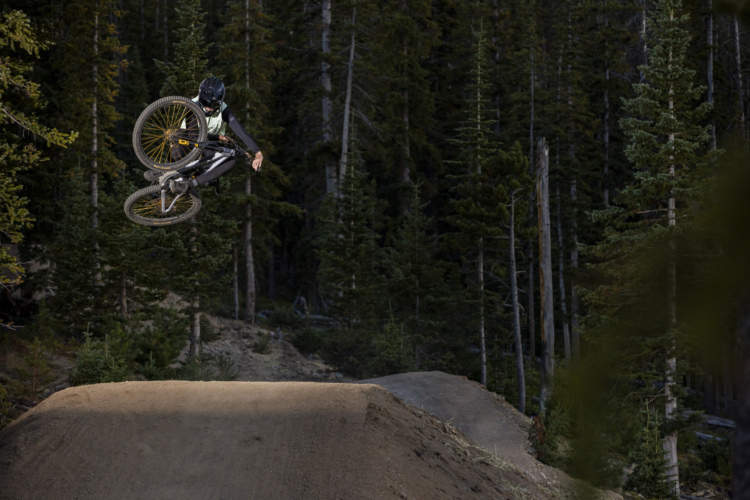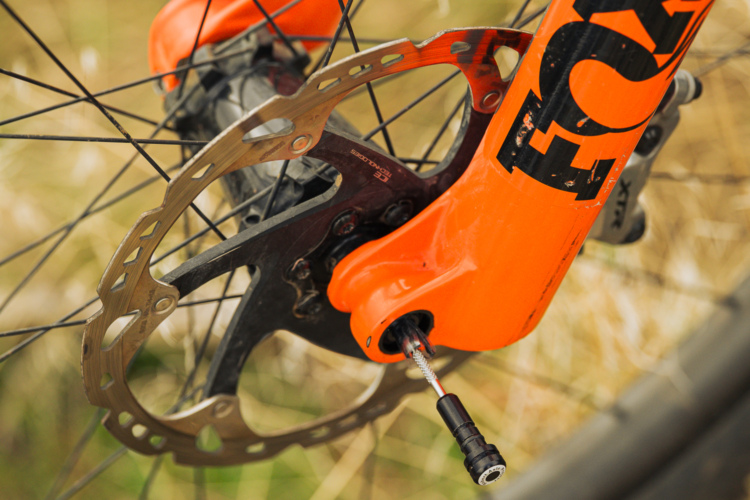Having recently reviewed the RaceFace Atlas bar, stems, and grips, the second part of my Atlas review is all about the cranks. The Atlas cranks have long been a part of the RaceFace line. In my opinion, these are the do-all cranks that nearly anyone can use. These puppies are strong, fairly lightweight, and plenty stiff. I reviewed the first generation Atlas a while ago and was not disappointed, so I was expecting a lot from these cranks.
Specs
Coming in at exactly 859 grams (175mm length / single 36T ring / 83mm BB), these are lighter than the new Shimano Saint cranks. Machined from OPTIM-AL alloy, it is 20% stronger than the 7050 alloy used by many manufacturers. To ensure these cranks are compatible across a wide range of bikes, RaceFace has incorporated 5mm of configurable chainline adjustment, insuring chainguide compatibility as well as a smoother, quieter ride.
The Atlas crank can be run as a dual ring as well for all of you freeriders and heavy-duty enduro riders out there, thanks to a lightweight, removable granny ring spider.
As I mentioned before, I run an 83mm wide bottom bracket; the Atlas is also available in 68, 73, and 100mm widths as well and 165, 170, and 175mm crankarm lengths. They’re available in an abundance of color choices too (red, black, stealth black, raw, blue, orange), and for a limited time, Kash money (gold) and Green Monster.
When you order the Atlas, it comes with a revamped Team bottom bracket. In the past, older versions of the DH bottom bracket did have sealing issues. A revamped triple wiper seal and improved cups, along with full compliment bearings all packed with Phil Wood’s grease, keep things spinning nicely. The full compliment bearing allows for twice as many ball bearings, thus reducing the stress on the contact point between bearing and race. The single ring version (tested) can be run with your choice of 9spd or 10spd drivetrain with no issues.
One other important feature on the Atlas crank is the EXI interface. EXI uses a crank stopper, meaning it butts up against the spindle shoulder when fully installed. Using a single hex key you can easily tighten things up. A larger hex key holds the release puller cap, but unless you intend to replace the bolt, that key won’t be necessary (unless you did the unthinkable and cross-threaded the bolt). RaceFace has a 4.5mm tab offset allowing for an increase in strength and great compatibility with bashes (referred to as Fat Tab™ technology). A few little niceties like alloy hardware and fresh second-gen graphics finish off the crankset.
Installation
You’ll need a couple of tools to install a crank such as the Atlas. Depending on your bike, you may need a bottom bracket facing tool and thread tap. If that is the case, see a professional bike shop. The installation instructions themselves are daunting and in very small print, so a magnifying glass is also recommended. I used the PDF file from the website which can be blown up to a size you can read. Either way, if you’re planning on installing the cranks yourself, you will need:
- 8mm Hex Key
- Torque Wrench and sockets (8, 6, and 5mm)
- ISIS crank puller
- Park tool BBT 19 or BBT 9 (or equivalent)
- Quality measuring tool (vernier caliper)
The Atlas bottom bracket installation requires you to chase the threads and ensure that the cups fit perfectly flat–thus the need for the thread chaser and facing tool. If you found your old cranks worn out prematurely, this could be the cause. Measuring the spacing of the bottom bracket shell is necessary for proper function of these cranks. In my case, the width fell right in the middle of the range (82.25mm – 83.25mm).
After the initial facing and clean up, following the proper installation procedure is paramount. There are a few little tricks with spacing to ensure a perfect chainline. First is the correct installation of the black 2.5mm bottom bracket cup spacers. The next key items are the thin 5 x 1 mm white spacers. These white spacers are used once the bottom bracket and your chain retention device is installed.
I needed to remove the cranks twice before my chainline was drag-free. To give you an idea of what I needed to do, I installed two 2.5 mm spacers on the drive side and one 2.5 mm spacer on the non-drive side (as instructed by RaceFace). I figured I needed to shift one of the white spacers to the drive side to provide perfect chain alignment to my chainguide… and then I found that the chainring was touching the inside part of my chain guide. After all was said and done, it took a total of 1 hour to get things running smoothly.
Now if you’re not comfortable with critical measuring, it’s probably best to just leave this installation to the pros.
Out on the Trail
Aside from the tiny print on the installation instructions, everything else was perfect! The cranks felt super solid under my feet throughout the entire review period. I never once had an issue with creaking, chainring coming loose, or any other problems. Some of my favorite things to do are rail berms and… well… jump. During those times, I had more than a few occasions where I wasn’t paying attention to where my feet were. The low bottom bracket height on my bike combined with the crank arm length dealt me a few pedal strikes that nearly threw me off the bike! But as for the crank arms themselves, they walked away with nothing at all… not even a scratch. Talk about tough.
Speaking of tough, I also noticed how much stiffer these cranks felt. I could jump all day without even a hint of any flex upon landing. I have to say that RaceFace really did up their game on these cranks. I can also see why RaceFace dropped the Diablo cranks from the line up! I have come to the conclusion that if you ever do hurt these cranks, you’ll probably be in bad enough shape that you won’t be able to complain about it.
Bottom line
The RaceFace Atlas cranks are solid, no-nonsense cranks for anyone who is figuring on riding some Enduro, All Mountain, Freeride, or Downhill. Yes, the print on the instructions was tiny, and they did take a bit of work to set up, but that did not affect the performance of these cranks. Compared to another well-known DH specific crank such as the E13 LG1, these are slightly less stiff, but far less troublesome in operation and maintenance. The use of existing tools with no need for special sockets or fussing with spring washers places these on the top of my list of burly cranks. For $299 and up (depending on configuration) you’re getting a decent set of cranks that will last for a long, long time.
Thanks to Rob at RaceFace for sending down the cranks for review!



























0 Comments